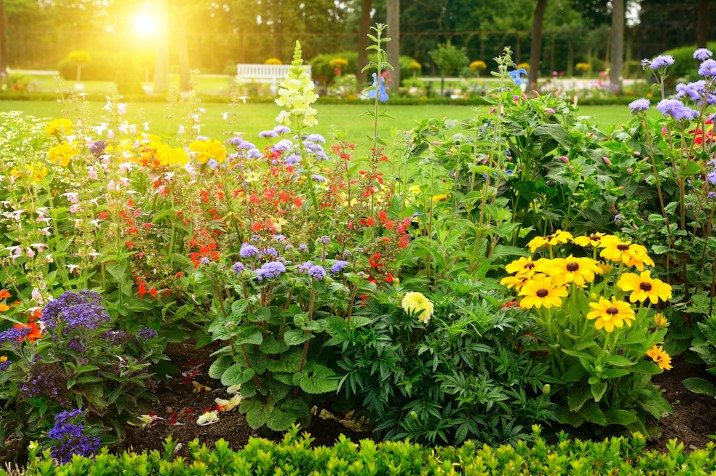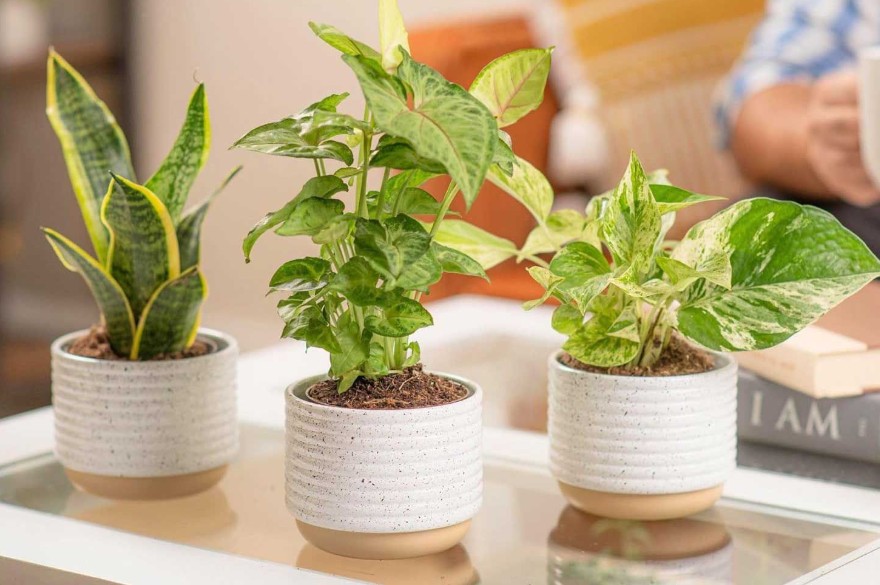
Perennial plants are a staple in gardens worldwide, prized for their beauty, resilience, and ability to return year after year. Unlike annuals, which complete their life cycle in one season, perennials establish themselves and thrive over multiple years, providing consistent color and structure to any landscape. For nurseries, offering a diverse selection of perennials can greatly enhance their appeal to customers seeking low-maintenance, sustainable garden solutions.
In this blog post, we will explore the many benefits of incorporating perennial plants into your garden. We’ll highlight some of the top perennial varieties ideal for different garden conditions, and provide essential care tips to help your perennials flourish. Whether you’re an experienced gardener looking to expand your plant collection or a beginner eager to learn, this guide will provide valuable insights into making the most of perennial plants in your garden.
Why Choose Perennial Plants?
Perennial plants offer numerous advantages that make them an excellent choice for any garden. Here are some of the key reasons why you should consider incorporating perennials into your landscape:
Longevity and Cost-Effectiveness
Perennials are known for their long lifespan, often thriving for several years with proper care. This means that gardeners can enjoy the beauty and benefits of these plants for a longer period without the need for frequent replacements. As a result, investing in perennials can be more cost-effective in the long run compared to annuals, which need to be replanted each year.
Year-Round Appeal
One of the significant benefits of perennials is their ability to provide year-round interest. By carefully selecting a variety of perennials, you can ensure that your garden has continuous blooms from early spring through late fall. Additionally, many perennials offer attractive foliage, seed heads, and even winter interest with evergreen varieties, ensuring that your garden looks appealing throughout the year.
Low Maintenance
Once established, many perennials require minimal maintenance compared to annuals. They often have deep root systems that help them withstand drought conditions, and they tend to be more resistant to pests and diseases. This makes perennials an excellent choice for gardeners who want to enjoy a beautiful garden without spending a lot of time on upkeep.
Environmental Benefits
Perennials play a crucial role in supporting local ecosystems. They provide essential food and habitat for pollinators like bees, butterflies, and birds, contributing to biodiversity. Additionally, the deep roots of many perennials help improve soil structure, reduce erosion, and increase water infiltration, making them beneficial for the environment.
In summary, perennial plants are an excellent investment for any garden. They offer long-lasting beauty, require less maintenance, and provide significant environmental benefits. By choosing perennials, you can create a sustainable and attractive garden that will bring joy and satisfaction for years to come.
Top Perennial Plants for Your Nursery
Selecting the right perennial plants for your nursery can significantly enhance your garden’s aesthetic appeal and ecological value. Here are some top perennial varieties that are both beautiful and easy to care for, making them excellent choices for any nursery.
1. Echinacea (Coneflower)
Echinacea, commonly known as coneflower, is a popular perennial known for its striking, daisy-like flowers and vibrant colors. These plants thrive in full sun and well-drained soil. They are drought-tolerant once established and attract a variety of pollinators, including bees and butterflies, making them a valuable addition to any garden.
2. Hosta
Hostas are shade-loving perennials celebrated for their lush, broad leaves that come in a variety of colors, shapes, and sizes. They are exceptionally easy to grow and are perfect for creating a lush, green backdrop in shady garden areas. Hostas also produce beautiful, fragrant flowers that add to their appeal.
3. Lavandula (Lavender)
Lavender is a fragrant perennial that thrives in full sun and well-drained soil. Its aromatic purple flowers are not only visually appealing but also useful for making dried arrangements, sachets, and essential oils. Lavender’s low water requirements and resistance to pests make it an excellent choice for xeriscaping.
4. Heuchera (Coral Bells)
Heuchera, or coral bells, are known for their stunning foliage, which comes in a wide range of colors, from deep purples to bright greens and even variegated patterns. These perennials prefer partial shade and well-drained soil. Heuchera’s attractive leaves and delicate flower spikes make them a standout choice for borders and container gardens.
5. Sedum (Stonecrop)
Sedums are hardy succulents with fleshy leaves and vibrant flower clusters. They are highly drought-tolerant and thrive in full sun. Sedums are ideal for rock gardens, borders, and container planting due to their ability to withstand tough conditions and their minimal care requirements.
6. Salvia
Salvias are aromatic perennials with spiky flower stalks that come in a variety of colors, including blue, purple, pink, and red. They prefer full sun and well-drained soil. Salvias are known for attracting pollinators, such as bees and hummingbirds, and add vertical interest to garden beds.
7. Hemerocallis (Daylily)
Daylilies are robust perennials admired for their trumpet-shaped flowers and grassy foliage. They are adaptable to a range of conditions, from full sun to partial shade, and are low-maintenance once established. Daylilies come in an array of colors and bloom throughout the summer, making them a versatile and reliable choice for any garden.
Essential Care Tips for Perennial Plants
To ensure your perennial plants thrive and provide lasting beauty in your garden, it’s important to follow proper care guidelines. Here are some essential tips to help you maintain healthy and vibrant perennials:
Planting
Site Selection and Soil Preparation Choose a location that matches the light and soil requirements of your perennial plants. Most perennials prefer well-drained soil and a good amount of sunlight, although some thrive in partial to full shade. Before planting, enrich the soil with organic matter such as compost to improve drainage and fertility.
Spacing and Planting Techniques Proper spacing is crucial to prevent overcrowding and to allow for adequate air circulation. This helps reduce the risk of disease and promotes healthy growth. When planting, dig a hole that is twice as wide and as deep as the plant’s root ball. Place the plant in the hole, backfill with soil, and water thoroughly.
Watering
Watering Requirements for New and Established Plants Perennials need consistent moisture during their first growing season to establish strong roots. Water deeply and regularly to ensure the soil stays moist but not waterlogged. Once established, many perennials become more drought-tolerant and require less frequent watering. However, it’s still important to water during extended dry periods.
Pruning and Deadheading
Benefits of Regular Pruning and Deadheading Pruning and deadheading (removing spent flowers) encourage continuous blooming and help maintain the plant’s shape and vigor. Regularly remove any dead or diseased foliage to prevent the spread of diseases. Pruning also stimulates new growth and can rejuvenate older plants.
Techniques for Different Types of Perennials Different perennials have different pruning needs. For example, some plants benefit from a hard prune in early spring, while others should only be lightly trimmed. Research the specific needs of each plant variety to ensure proper care.
Fertilizing
Recommended Fertilizers and Application Timing Perennials benefit from a balanced fertilizer applied in early spring to support new growth. Use a slow-release fertilizer or organic options like compost to provide nutrients over time. Avoid over-fertilizing, as this can lead to excessive foliage growth at the expense of blooms.
Organic vs. Synthetic Options Organic fertilizers, such as compost and well-rotted manure, improve soil structure and promote healthy root development. Synthetic fertilizers can provide a quick nutrient boost but may need to be applied more frequently. Choose the best option based on your garden’s needs and your preference for sustainable practices.
Dividing
When and Why to Divide Perennials Many perennials benefit from division every few years to prevent overcrowding and rejuvenate growth. Dividing plants also allows you to propagate new plants and spread them throughout your garden or share with friends.
Step-by-Step Division Process The best time to divide perennials is in early spring or fall when the plants are not in active growth. Carefully dig up the plant, separate the root clumps into smaller sections, and replant them in prepared soil. Water thoroughly to help the new divisions establish.
Winter Care
Mulching and Root Protection Protect your perennials in winter by applying a layer of mulch around the base of the plants. Mulch helps insulate the roots, conserve moisture, and prevent frost heaving. Use organic materials such as straw, leaves, or wood chips for mulching.
Additional Protection Methods for Sensitive Perennials Some perennials may require extra protection during harsh winters. For these plants, consider covering them with burlap or using garden cloches. Potted perennials can be moved to a sheltered location to protect them from freezing temperatures.
Conclusion
Perennial plants are a cornerstone of any successful garden, offering long-lasting beauty, low maintenance, and significant ecological benefits. By incorporating a variety of perennials, such as Echinacea, Hosta, Lavender, Heuchera, Sedum, Salvia, and Daylily, you can create a dynamic and thriving garden that provides interest throughout the year.
Choosing perennials not only ensures a sustainable and cost-effective garden but also supports local wildlife and improves soil health. These plants require minimal care once established, making them an ideal choice for gardeners of all skill levels.
By following essential care tips—such as proper planting, consistent watering, regular pruning and deadheading, appropriate fertilizing, periodic dividing, and thoughtful winter care—you can enjoy the full benefits of perennial plants. These steps help ensure that your garden remains vibrant and healthy year after year.
Embrace the enduring charm of perennial plants and transform your garden into a perennial paradise. Whether you’re a seasoned gardener or just starting, perennials offer a rewarding and sustainable way to enhance your outdoor space. Start planting today and enjoy the lasting beauty and benefits of these remarkable plants.







